Coffee, Tea, or Emergency Response?
That Diet Coke is a courtesy. The real service your flight attendant provides? You never want to find out.
/https://tf-cmsv2-smithsonianmag-media.s3.amazonaws.com/filer/20/88/2088f607-9c2f-44c9-af9a-252b7a681eb5/07h_am2019_ap_802889851960_live.jpg)
Maybe the 144 passengers on Southwest Flight 1380 to Dallas listened carefully to the flight attendants’ safety briefing while the airplane backed out of the gate. But it’s more likely that most of them left on their noise-canceling headphones or focused on their airplane-mode devices. April 17, 2018 was not the day to do that.
About 20 minutes after the Boeing 737 took off from New York’s LaGuardia Airport, its left engine exploded. Fragments shattered the window nearest the 14th row.
As the cabin violently decompressed, passenger Jennifer Riordan—a 43-year-old mother of two—was sucked partway out of the tiny porthole. Although other passengers were able to drag her back in, she later died of her injuries.
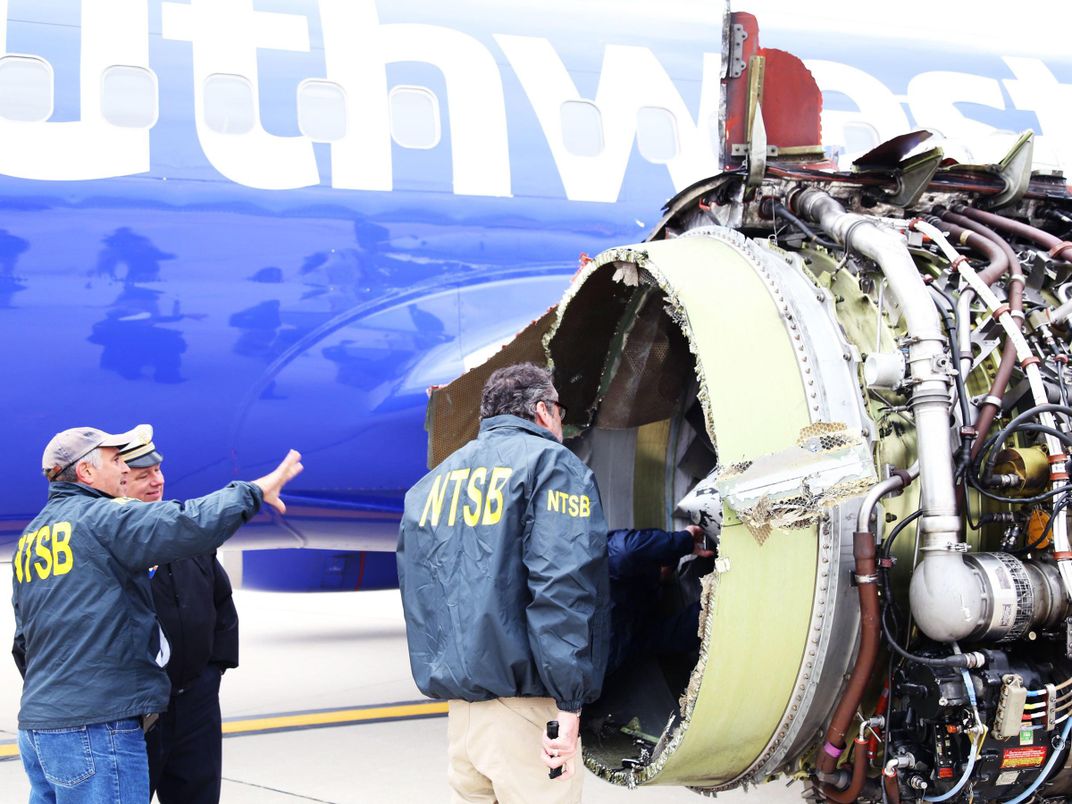
The passengers of Flight 1380 understandably believed the airplane might crash. When the oxygen masks dropped, they scrambled to strap them over their faces. But as documented in now-famous cellphone photos from the cabin, many of them did it wrong. As any flight attendant will tell you—has told you, every time you’ve flown—you place the mask over your nose and mouth. Some passengers placed their masks only over their mouths.
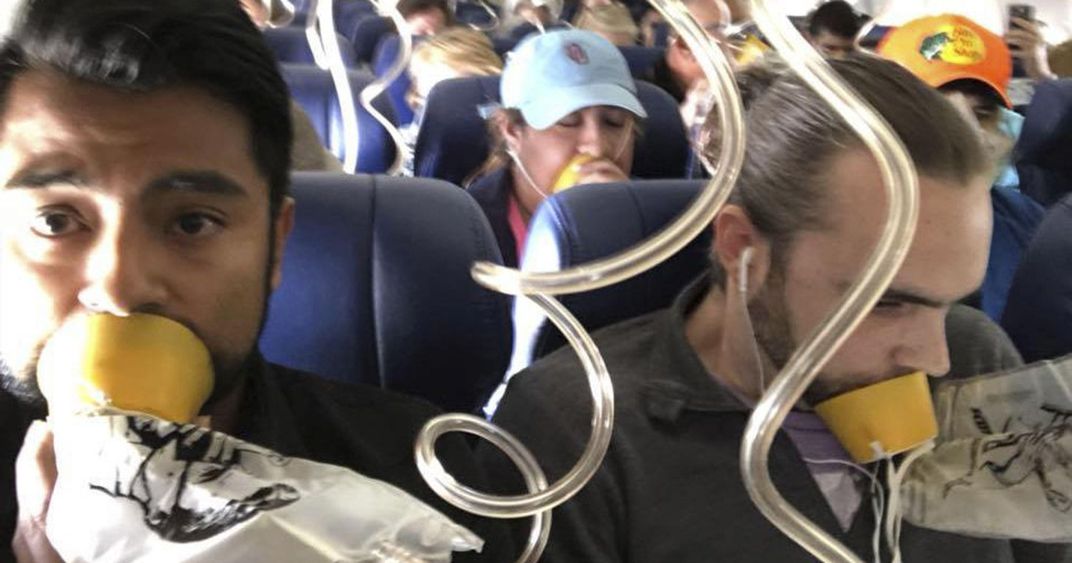
Flight attendants the world over were not surprised by this mistake. They’re aware that passengers often aren’t listening to them. But they also understand that in moments of panic, emergency procedures that are too unfamiliar to be instinctive can fly from the mind. And that’s exactly why flight attendants are onboard: because those procedures have become second nature to them. They’ve been trained to save passengers’ lives.
Air disasters from decades past illustrate just how essential a role flight attendants play.
* * *
One of the chief benefits of training is the cool-under-fire demeanor exhibited by flight attendants and other first responders during emergencies. The training is designed to pierce through any layer of confusion or panic to the top of an attendant’s mind as soon as something goes wrong. That’s something Jan Brown realized early on in her flight attendant training in Cheyenne, Wyoming, in 1960.
Four days into the course, out in the world beyond Cheyenne, a TWA jet collided with a United Airlines airplane.
“I had just turned 20 and had lived a rather sheltered life up to that point,” says Brown. And while she knew that such accidents were possible, the fact of one happening right then imprinted her with a state of watchfulness that stuck with her until her retirement. Completing her training in January 1961, Brown worked for United Airlines for about two years before leaving to get married; she returned to the airline as a flight attendant in 1977, and served another 21 years before retiring. Each year she was part of a flight crew, Brown and her colleagues had to complete emergency training, one-on-one with an instructor, in an actual airplane. They role-played decompressions, ditchings, fires, and heart attacks. Brown learned to touch each relevant object, like oxygen masks and fire extinguishers, to aid her recall of the steps.
“If you touch everything, it stays in your memory. It becomes an automatic reflex,” she says. Conditioning these responses into reflex is key. “When you’re absolutely petrified, you’re not thinking as clearly as when you’re not being threatened,” she says.
Almost 30 years after her training, in July 1989, Brown’s preparedness was put to the test. She was mid-cabin in economy, serving the usual food and drinks on United Flight 232 from Denver to Chicago, when she heard an explosion. She dropped to the floor and wrapped her arm around an armrest, in case there was an explosive decompression that would pull her out of the airplane. You can’t help anyone, after all, if you’re dead.
Once the aircraft stabilized, she got up and went back to work. “You put on your game face, because everyone is looking at you, because they want to see if they can read what the problem is,” she says. “So you just go on like perfectly normal.”
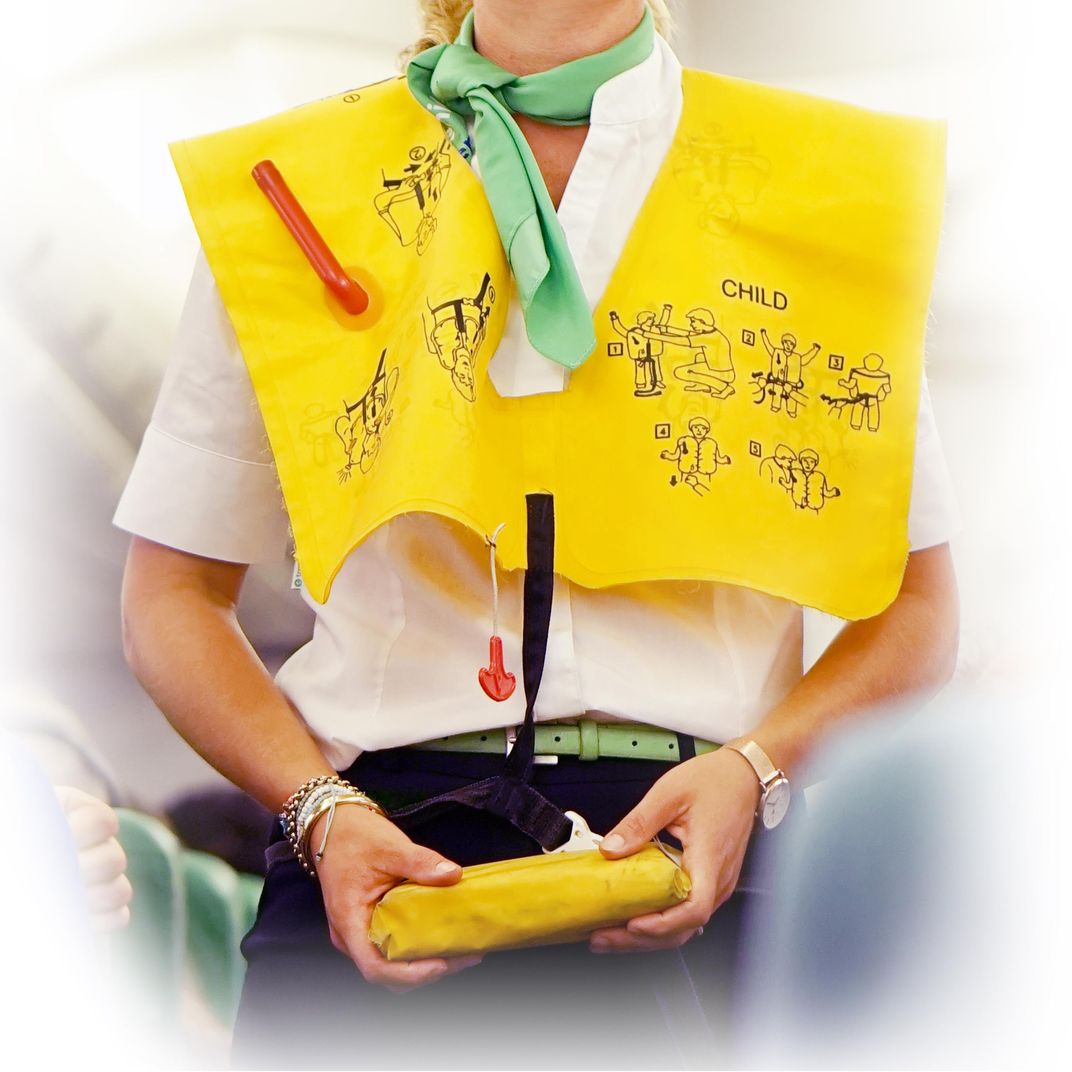
From her jump seat she could see that a woman traveling with a toddler in her lap appeared to be panicked. As soon as the aircraft stabilized, Brown rose and walked over to comfort the woman. Her name was Sylvia, she said.
As they spoke, the pilot came on the intercom: They’d lost an engine. “They said we’d be a little slower getting to Chicago,” she says. The pilot’s use of humor helped settle the passengers.
Brown then focused on making connections with and drawing out other passengers who looked particularly upset. That kind of people-reading, several flight attendants reported for this story, is essential to the job—not just in emergencies, but all the time. When you’re locked in a pressurized tube flying through inhospitable space, you need to have a sense of who looks nervous, aggressive, sick.
Then the chime rang summoning her to the cockpit. “I did my best to stroll,” she says. But when she opened the door, she knew the situation was dire. The airplane had lost its hydraulics, the captain told her. Brown didn’t know exactly what that meant, but she understood they were in danger. The captain told her to secure the cabin, stowing dinnerware and pens and or any other loose items, and to brief the passengers on emergency landing procedures. “I think part of my brain froze to contain the fear,” she says. But she willed herself to appear calm. She briefed the other flight attendants (in two groups, so passengers wouldn’t get suspicious and scared before the attendants could give instructions), and they prepped to make an announcement. But the pilot preempted. Speaking via intercom from the cockpit he told the passengers that he would be making an emergency landing in Sioux City and that it was going to be rough. As soon as he finished, Brown began briefing them, reading instructions aloud from a manual. This time, “I had their undivided attention,” she says. She saw to it that blankets and pillows were distributed to the four passengers traveling with infants in their laps, and instructed them to wrap the babies in the bedclothes and place them on the floor until the “brace” command came. She instructed the three passengers seated close to the nearest exit door on how to open the door and activate the evacuation slide, just in case Brown was incapable of doing it after impact. And then she strapped herself in and waited to find out what, exactly, “hard landing” would mean. She remembers hearing a noise she didn’t think was possible as the airplane slammed into the earth and split into three pieces.
Brown was in the middle section. It was rolling. She was on fire. “I guess this is how I’m going to go,” she thought. And she recalls thinking it in that way: coolly, factually. “It was the most peaceful moment of a lifetime because the fear was gone,” she says. But in a second or two, when the movement and flames subsided, she realized despite suffering superficial burns, she was alive. “I jumped back into work mode,” she says. Now that they were on the ground, it was time to get people out.
The part of the fuselage Brown was in had come to a rest upside down, and without hydraulics the doors wouldn’t have worked anyway. In pitch darkness, she used her hands and her voice to guide surviving passengers to find their way outside through breaks in the structure of the airplane.
Once she and the other attendants got the passengers out, Brown ran into Sylvia, the anxious woman who’d been traveling with her 22-month-old. “She looked up at me and said, ‘You told me to put my baby on the floor, and he’s gone,’ ” she says. When the airplane split, the baby had flown from her arms, impossible to hold against the incredible force. Sylvia tried to go back into wreckage of the airplane to search for her baby, but Brown blocked her path.
“That was where I started getting feeling again,” says Brown. She began the advocacy work that continues to this day the week after the crash, trying—without success some 30 years later—to get the FAA to change the standard that children under two don’t need their own seats. “If you’re up against the FAA, you better live a long life,” she says.
On a later flight, one passenger once told Brown he didn’t need to tighten his seatbelt because if there was a crash, they were going to die anyway. She said, “I’m living proof of how wrong you can be.” Of the 296 passengers and crew aboard Flight 232, 185 survived.
* * *
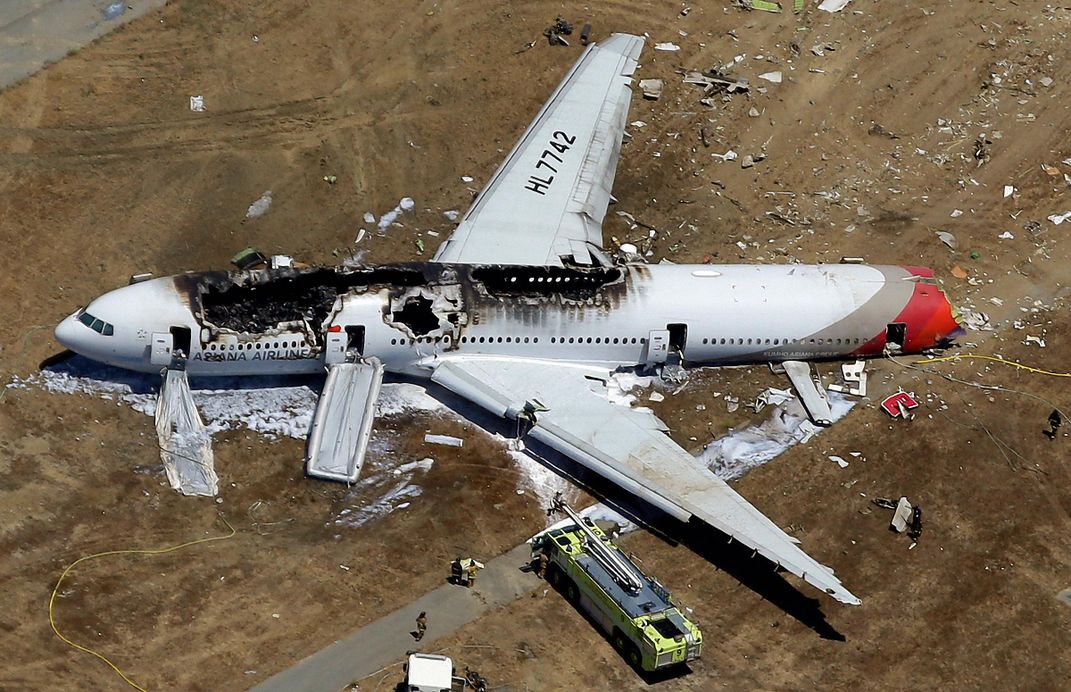
Each airline designs its own training program in compliance with FAA guidelines, according to Jeffrey Ewing, National Safety and Security Chair of the Association of Professional Flight Attendants, who started with American Airlines in 1998. The 27,000 members of APFA complete one of the most demanding of those, completing an initial six-week intensive course, and must qualify on six of the most common aircraft models in the American fleet before they’re assigned to a crew. Everyone must qualify on the individual type before they can serve on it, Ewing says. Basic self-defense techniques are part of the curriculum. He doesn’t have figures available on trainee washout rates, but he recalls that in his own training class, 21 years ago, 62 out of 68 candidates graduated. (He is reluctant to assign any significance to this number, calling it purely anecdotal.)
All of the airline’s attendants, no matter how experienced, complete at least two days of refresher training—classroom instruction and simulated emergency drills—every 12 months. These sessions happen primarily at American’s “flagship university” in Fort Worth, Texas, where they have functioning interior mock-ups of almost every aircraft American flies. These are used for drills simulating every scenario crews must reasonably expect to negotiate—decompressions, water landings, medical emergencies. Flight attendants have to demonstrate they can evacuate an airplane in 90 seconds with half the exits blocked. They must demonstrate they know how the rafts work, and quickly locate the emergency supplies that will keep them alive at sea.
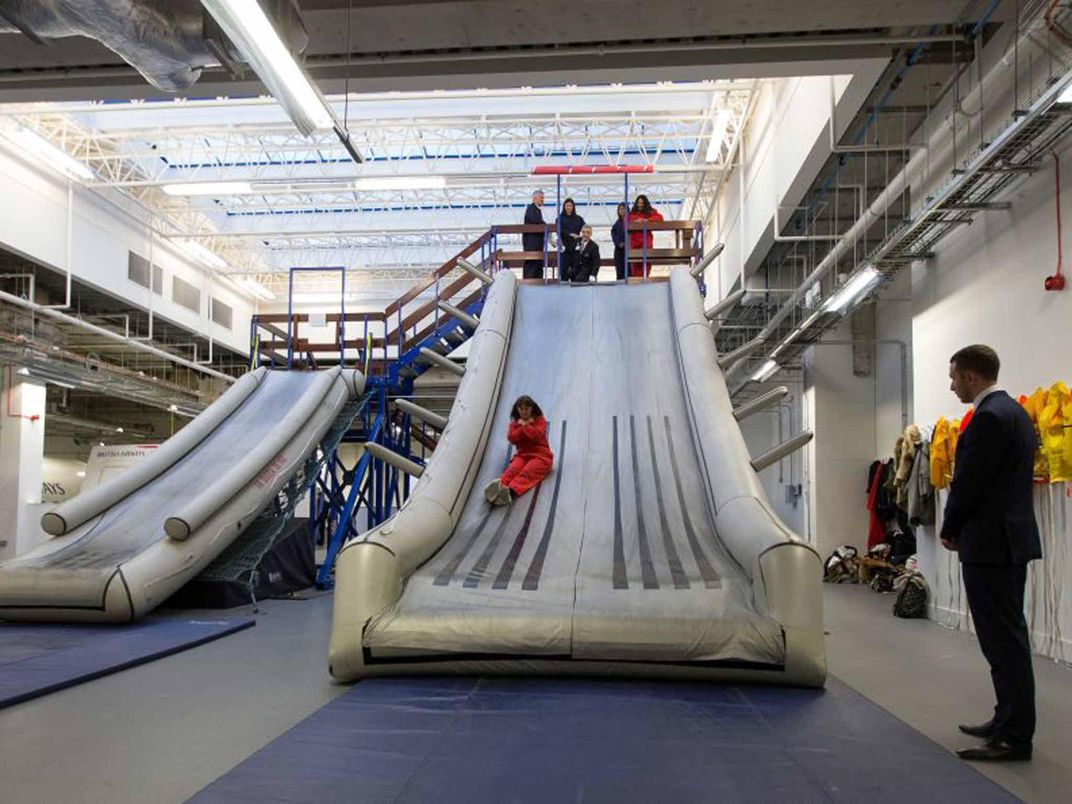
Ewing says that if any attendants fail to complete a drill successfully, they’re given the chance to try again that same day. If they fail three or four times in a row, they’re typically sent back to their hotel and encouraged to make another attempt the following day, with a representative from the union present if they wish—though Ewing says he’s been involved in “less than a handful” of such cases since he was appointed to his post last July. But again, such repetitions occur despite the need to recertify 27,000 attendants each year.
Commercial flight attendants must hold a certificate of demonstrated proficiency from the FAA, and some airlines add recurrent, scenario-based training to their requirements. The type of emergency training offered “is only limited by the training budget of the air carrier,” writes Marcia Adams, an FAA spokesperson. “Minimum survival training could be a written scenario exercise for a small regional carrier. This could be associated with lessons learned from an accident or incident review. The larger air carrier training departments use scenario-based training [and] computer-based training, and two are experimenting with virtual reality or augmented reality training.”
Ewing says that previously unforeseen incidents, like the “Shoe Bomber” who was prevented from detonating an explosive device concealed in his shoes aboard an American Airlines flight in 2001, often result in the creation of new procedures attendants must commit to memory.
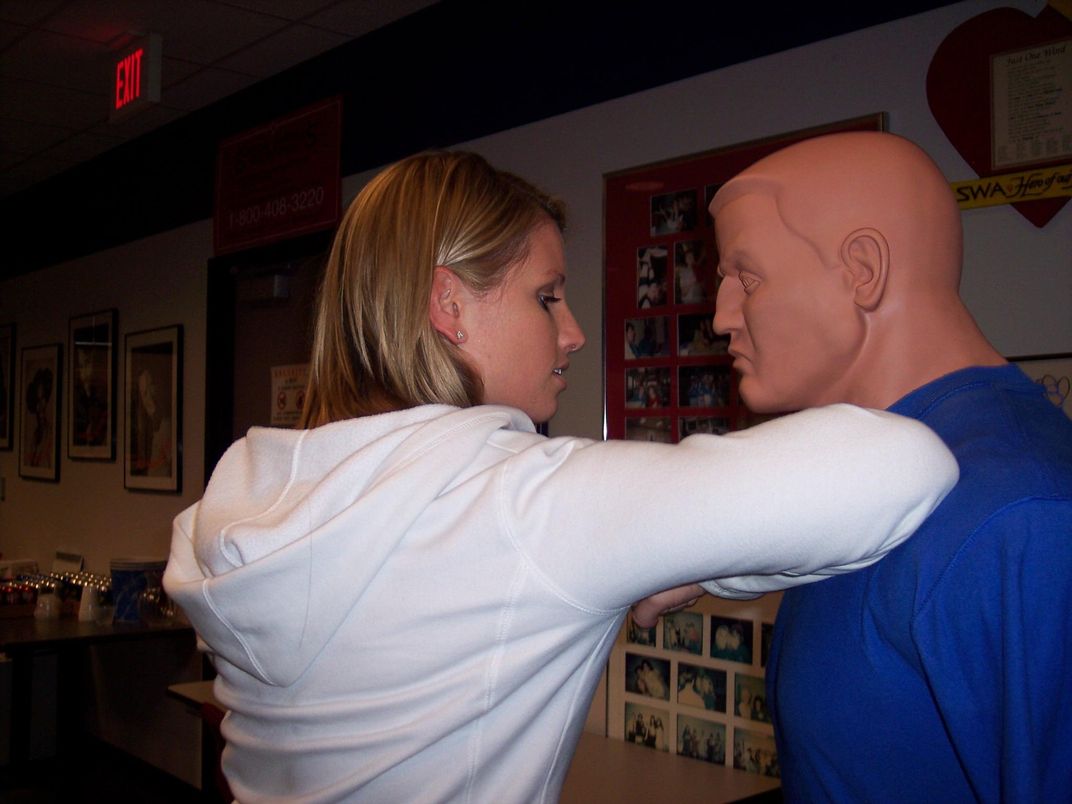
“Scenario-based” is key to the training’s success, believes flight attendant Doreen Welsh, who worked for U.S. Airways (and its precursor, Allegheny Airlines) for 38 years. She estimates that after completing her initial training in 1970, three full work days of her year were devoted to training exercises at U.S. Airways’ training facility in Charlotte, North Carolina. Any new aircraft or new piece of lifesaving equipment or new evacuation technique would mean a new training course, culminating in simulations and written exams. Like Brown, Welsh is a survivor of an in-flight catastrophe.
One of the last flights on which she served as a crew member was U.S. Airways Flight 1549—the “Miracle-on-the-Hudson” flight that ditched in the river on January 15, 2009, after colliding with geese and losing both engines. She remembers hearing a loud bang, which was followed instantly by a burning smell. Welsh first thought there was a fire and went straight for the fire extinguisher. “All of that came crystal clear,” she says. “It just all clicks in. You just start doing what you have to do.”
Then she studied the overhead compartments, feeling them to see if they were hot, the fire trapped inside. “I got pretty far up, and I thought we were just going to land,” she says, “so I thought I’d better strap myself in.”
She had just enough time to buckle her seat belt before the captain gave the order: Brace for impact.
“Brace for impact,” she repeats now. “Not many people have heard that and lived.”
Passengers were texting and making phone calls to loved ones. “People have said to me, ‘Oh, I was in a car accident, so I know,’ ” Welsh says. “But a car accident is immediate. We had 90 seconds” to contemplate the likelihood of imminent death. In that endless moment, all she could do was give the clipped, sharp commands the crew were trained to repeat like mantras. “Brace, brace. Heads down, stay down.”
Passenger Denise Lockie will never forget those phrases. “They said it from a low tone to a higher tone,” she says. “It was very, very calm voices.”
In a couple of recent in-air emergencies, like the AirAsia flight that dropped 20,000 feet in October 2017, passengers have criticized flight attendants for yelling, calling them “hysterical.” It appears, though, that crew members are following their training: Getting passengers’ attention, giving short commands in a voice that everyone can hear.
Near the front of the cabin on Flight 1549, Lockie took off her glasses and tucked them in the seatback pocket. “I guess I probably didn’t want to see what was going to happen,” she says.
When the Airbus A320 struck the Hudson, the impact was harder than Lockie can describe. “It made this horrendous noise,” she says. “I thought I was dead.” The impact of the landing left a hole behind Welsh’s jumpseat in the aft of the cabin. Water flowed in. A piece of metal had shot through her leg, but she didn’t feel it. She heard another attendant say, “Evacuate, evacuate!” When she checked the window, the water outside was a shock. She had to switch to a new procedure in her mind, corralling people to go forward instead of back, where the water level was too high to open the rear doors. “I was making all this up because there wasn’t time to go up the aisle like a normal deplaning,” she says.
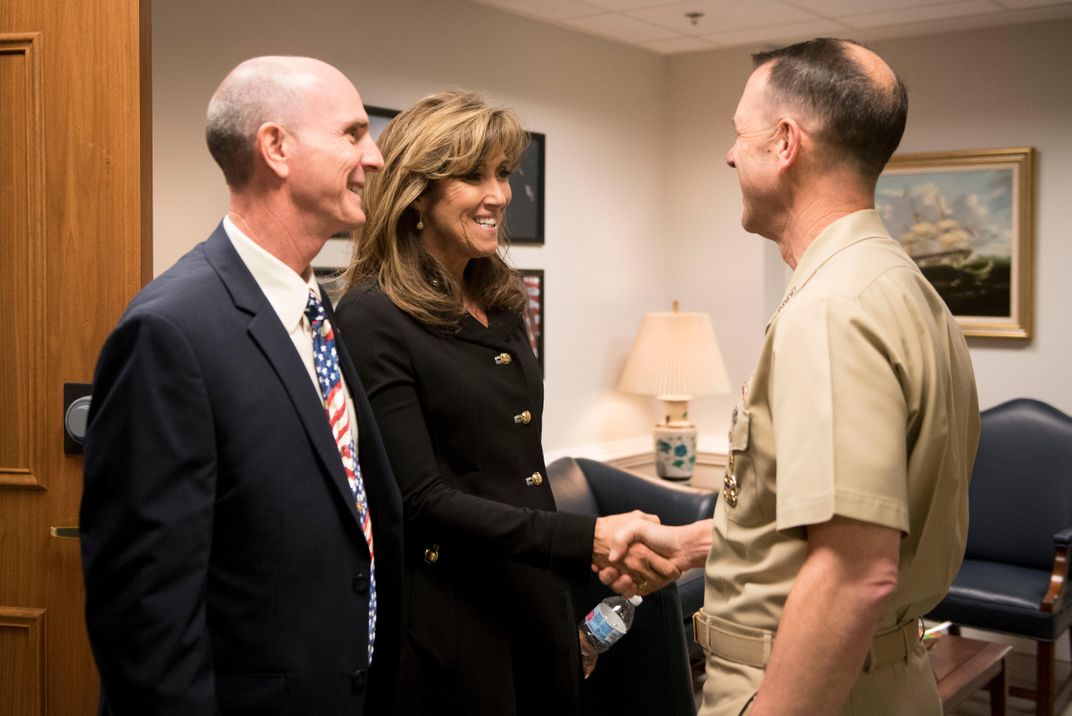
Although it’s the flight crew’s job to help passengers in an emergency, passengers have to look out for themselves, too, says Heather Poole, a veteran flight attendant and the author of the 2012 memoir Cruising Attitude. It’s frustrating when passengers don’t pay attention, because their unpreparedness is another factor the flight crew must compensate for, in practice and in mindset. “One minute you’re handing out pretzels and a Coke, and the next minute you’re doing CPR,” she says. Of course, the fact that most people never think about flight attendants’ lifesaving skills is because it’s also part of an attendant’s job to put you at ease. But Poole says passengers have a responsibility to pay attention during safety briefings too.
“You need to be responsible for your own life,” she says. “There comes a point where, really, you need a dancing squirrel to put your mask on?” She’s referring to the animated sing-along videos many airlines—like Virgin Atlantic and United—have started using as a substitute for flight attendants’ announcements. Poole believes the FAA should ban the use of headphones during takeoff and landing.
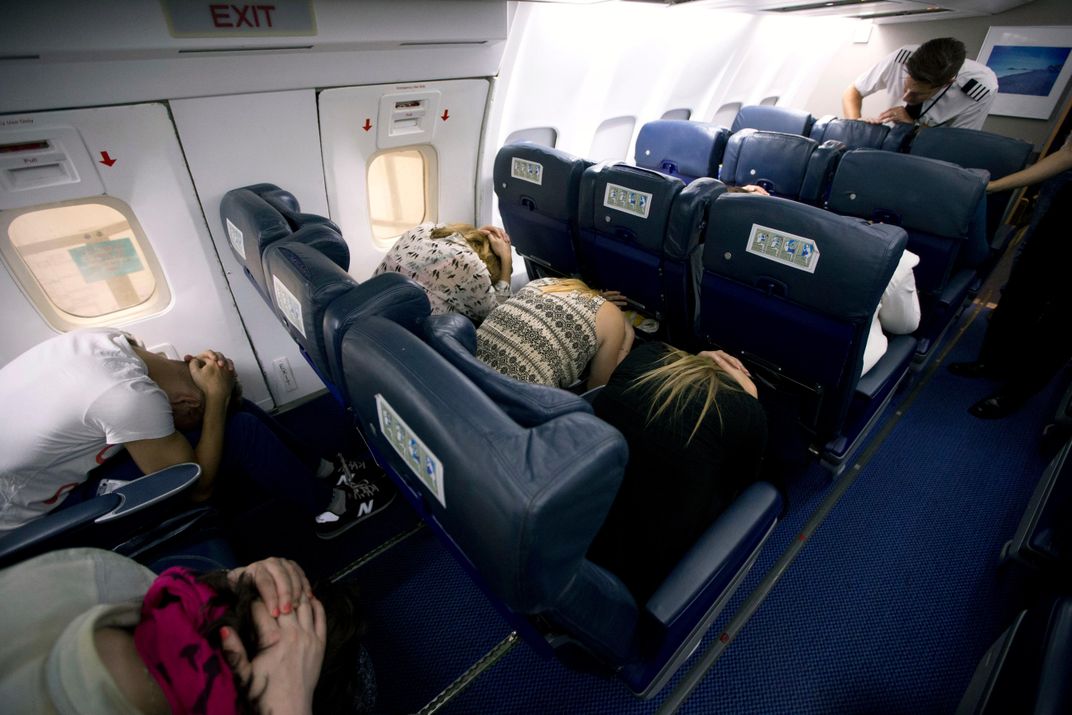
When I asked the FAA what it’s tried to encourage passengers to pay attention, the agency referred me to its Advisory Circular 121-24C, a document from 2003 that more or less just says…it’s tough.
One way to increase passenger motivation is to make the safety information briefings and cards as interesting and attractive as possible, it reads. The document goes on to specify that flight attendants should be clear and loud and visible—or replaced with a recording that is. The advantage of an audiotape or videotape presentation is the assurance that a complete briefing is given, that the diction is good, and that an overall high quality briefing is maintained, it says.
At least one observer has a different idea: Instead of changing the briefing, change the masks.
“The oxygen mask was designed how many decades ago?” says Matt Ziemkiewicz, president of the National Air Disaster Alliance Foundation. “Maybe we need to design one that’s easier” to put on correctly. The NADAF is an advocacy group formed by air crash survivors in the 1990s. They’ve worked on getting fire suppression and smoke detectors installed on passenger transports, and lobbied for child-restraint systems like the ones Brown wants. And they help survivors of air accidents connect to help one another overcome their traumatic memories.
That’s a small group, because aviation accidents are extremely rare: There were 32 in the first six months of 2018, according to the International Air Transport Association, out of 21.7 million flights. “I think people feel safe when they’re flying today,” says Ziemkiewicz. “They should.”
Welsh does, though she needed some time after Flight 1549’s dramatic water landing. In the years since her retirement, she’s become a professional speaker, flying to about 20 destinations a year. When she hears a flight attendant give a safety briefing like the ones she gave thousands of times in her career, she occasionally feels an impulse to comment, but she suppresses it. “But if it’s an aircraft I’m unfamiliar with,” she says, “You’d better believe I’m studying that seatback card.”
